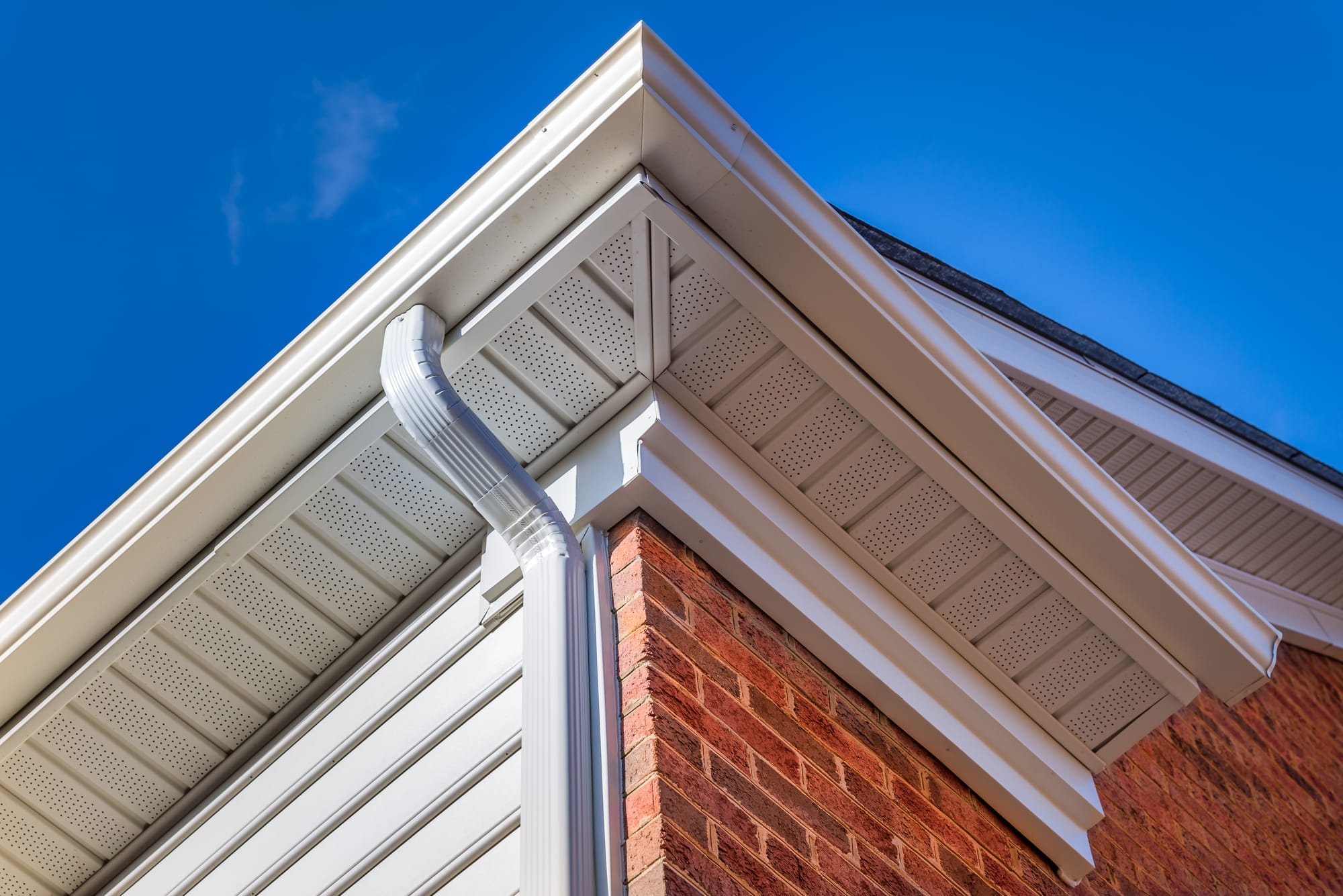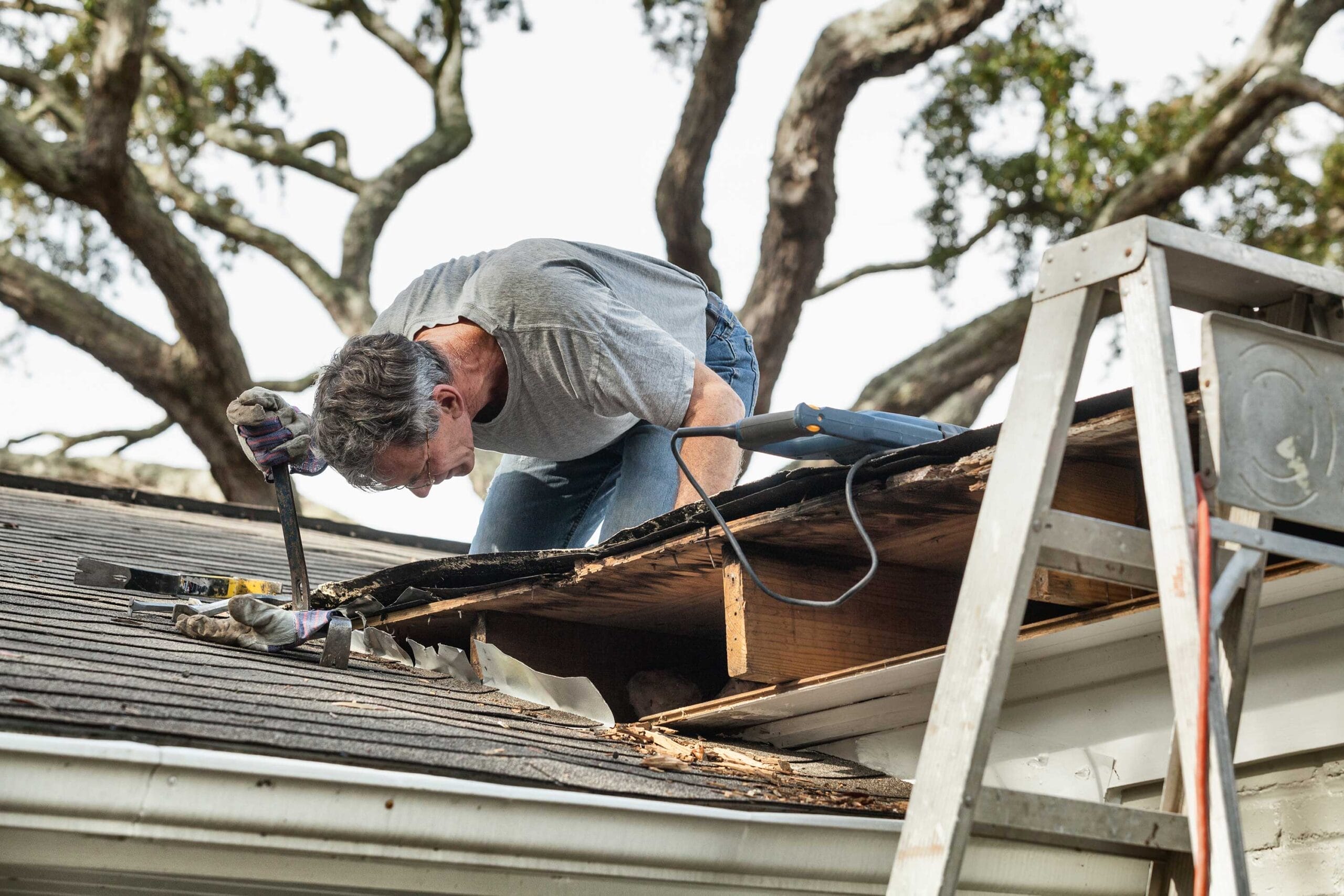
Spending an afternoon cleaning gunk out of your gutters is likely not an activity you look forward to as a homeowner, yet routine gutter maintenance is very important in keeping your home’s roof, exterior and foundation free of water, debris and other unwanted materials. What might cost you an hour or two of your time more than makes up for the potential thousands you would spend repairing water damage to your home – or to your roof, should the gutter collapse from the weight of its contents. We can’t make cleaning your gutters sound fun, or even enjoyable, but we can give you advice that might make the task easier and more efficient. First, let’s learn more about the importance of clean gutters.
Why Do I Need To Clean My Gutters?
Gutters are designed to collect rainwater from the roof and carry it away from the foundation of the home through downspouts. Since both the gutters and downspouts need to be clear in order to carry out this task, having clogged gutters could cause an overflow of water.
If the water has nowhere to go, it will naturally fill up the gutter and eventually overflow onto the foundation of the home – and it won’t stop there! Depending on the amount of water and the condition of the foundation, water could seep into your basement or crawl space. Foundation repair alone could cost upward of $10,000, and if water leaks into your basement, your home could be at risk of mold.
Clogged gutters can also pose a weight strain on your roof and the fascia (the boards behind the gutters). If the gutters are too full, they could possibly collapse off the roof of your home, or even backup water under your roof causing damage to the shingles or the roof decking and the exterior of the house.
To summarize: A routine cleaning of your gutters can prevent damage to your roof, exterior and foundation, saving you thousands in possible repair costs.
How Often Do I Need To Clean My Gutters?
Now that you know what’s at stake with clogged gutters, how do you ensure your gutters are clean and able to effectively channel water away from your home? Obviously, it’s not practical to climb a ladder every day and check their condition.
Actually, most professionals, including us, recommend that you clean your gutters two times a year: once in the spring and another time in the fall. However, depending on your city’s climate and the number of trees near your home, you may have to clean your gutters more frequently.
This is especially true if you live in a climate where it freezes during the winter. If your gutters are unable to properly drain water from your roof, the buildup of water may reach your roof and cause damage to your shingles when the weather drops to freezing conditions. It’s also not a bad idea to check your gutters after a severe storm. Leaves, branches and other debris might have become dislodged during the storm and found their way into your gutters.
It might sound like a lot to keep up with, but spending just an hour checking and possibly cleaning out your gutters a few times a year is worth the amount of money you’ll save in potential damage.
How Do I Clean The Gutters Myself?
For some, the cost of hiring a professional to clean out your gutters is worth it, but if you’re looking to save money, you can tackle this task DIY-style by following our step-by-step guide below.
Get the Right Equipment
The right equipment can make all the difference when it comes to cleaning your gutters. Beyond a basic ladder, there are a few more items that can help make the task more efficient. Here’s a basic list to get you started:
- Extension ladder
- Hand trowel
- Bucket
- Tarp
- Garden Hose
- Spray nozzle
In addition to obtaining the right equipment before you start cleaning your gutters, it’s also a good idea to inform someone in your house, a neighbor or a close family member or friend that you’ll be working near the roof of your home and how long you plan on working. In the case that you fall off the ladder and become injured, it’s important that at least one person know what you’re doing and where you are.
This brings us to our next point: If you don’t have a ton of experience working on a ladder, ask someone to spot you while you clean out your gutters. At the very least, secure a standoff stabilizer that attaches your ladder to your home so it won’t fall over while you’re working.
Remove Gutter Debris
Secure your ladder before climbing the ladder, make sure it is stable and if possible have someone else assist you. You can either use the plastic trowel to dig out the debris or simply use your hands – it all depends on how comfortable you feel using tools while on the ladder.
Use a bucket or a tarp for collecting gutter debris. You can either remove the debris from your gutters and deposit it directly inside the bucket or drop it to your side, letting it fall and collect on a tarp. Take your time removing the gutter debris, being careful to not extend your reach beyond the ladder, as you could fall by reaching too far.
If you’re uncomfortable with heights or have difficulty climbing up and down a ladder, you can clear out your gutters by using a leaf blower or pressure washer to remove the debris. Keep in mind, however, that this could end up being a messier cleanup afterward, as compared to collecting and depositing the debris by hand.
If your house is more than two stories, we would recommend calling a professional to clean out second-story gutters, as the extended height could pose a safety risk to homeowners.
Check Your Gutters And Downspouts For Clogs Or Damage
After you finish removing gutter debris, use your hose with the spray nozzle attachment to flush out your gutters, removing anything you might have missed. This is also an important step for checking for any leaks or damage to your gutters.
Follow the same steps as you did removing the debris and slowly work your way down your gutter, letting the water run for a few minutes to check for leaks or clogs. This step may not apply to you as thoroughly if you have seamless gutters, you will still want to check for leaks at any point where your gutters connect, such as in corners and the endcaps.
Make sure to also spend time checking your downspouts for clogs. If you notice that the water isn’t draining out of the downspouts, place your hose partway down your downspout and run the hose at high pressure. If the clog is still lodged inside the downspout, you can use a plumber’s snake tool to clear out any blockage that remains in the downspout.
Lastly, check your gutters to ensure they are securely attached to the fascia and that any damage you found to the gutters is repaired with a sealant. If the damage is more severe, you may need to replace the gutter or call a professional like us to install a new gutter.
This process should only take one – two hours out of your day. It likely won’t be the highlight of your day, but at least you’ll have peace of mind during the next heavy rainfall.
If you want to avoid this process entirely, you may opt to have a professional like us install gutter guards on your home. while you will still need to inspect for problems such as leaks or blockages this will stop you from having to clean out the gutters regularly.







